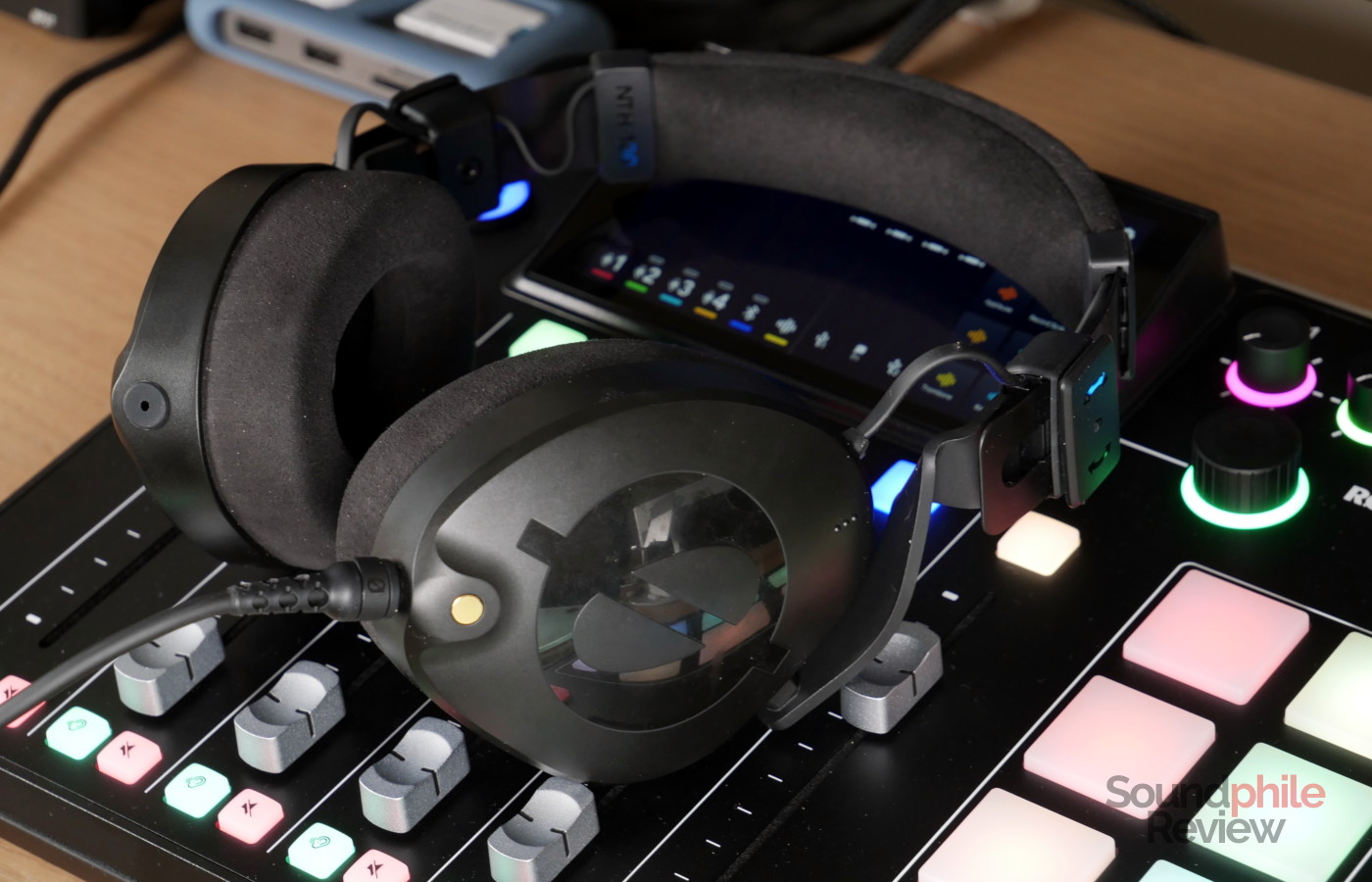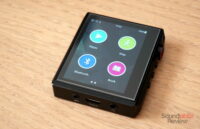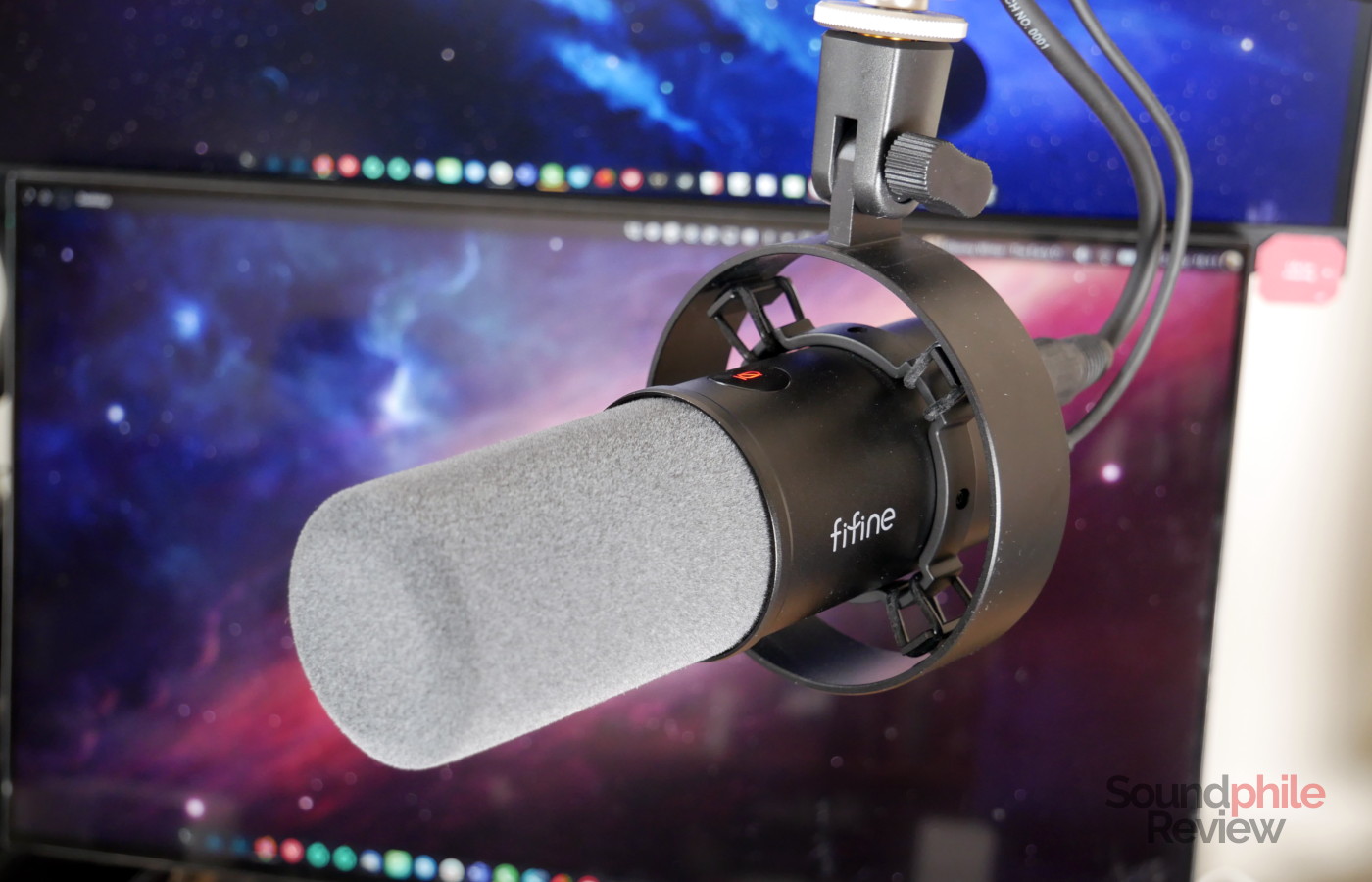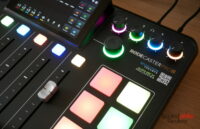RØDE is one of the most pre-eminent names in the world of audio recording, thanks to its multiple-decade-spanning history of producing high-quality microphones. The company launched its very first headphone last year, though: the RØDE NTH-100 are the first headphones under the RØDE brand and they are catered towards monitoring and content production.
Disclaimer: I received this unit for free directly from RØDE. The NTH-100 have an MSRP of $149. Additional information is available on RØDE’s website.
TL;DR: recap
| Pros |
Cons |
| + Sturdy build
+ Superbly comfortable + Great attention to detail + Relatively neutral tuning |
– Tuning is a bit too warm for monitoring and mixing |
Rating: 8/10
Packaging & Accessories
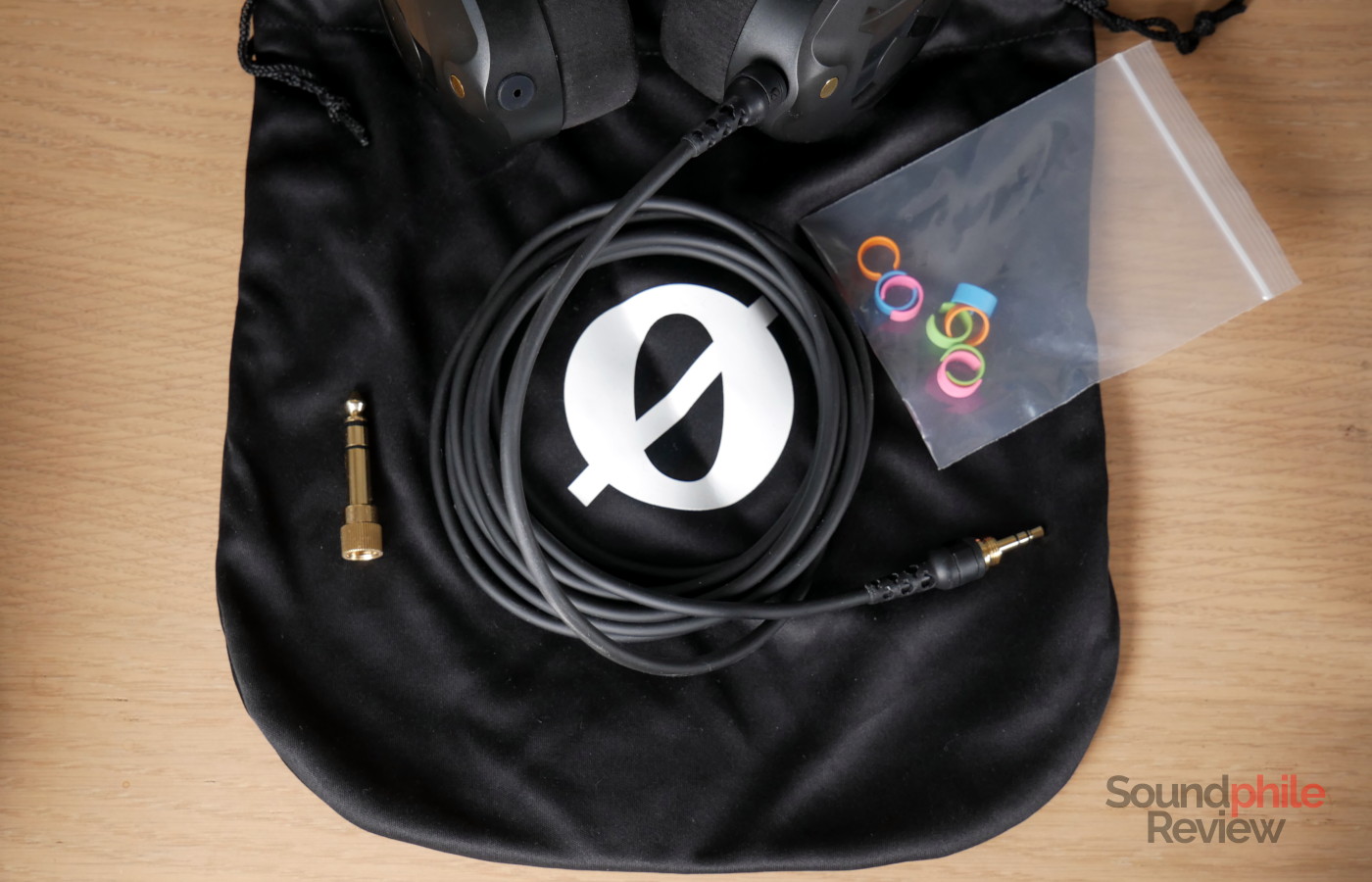
The accessories provided with the NTH-100 aren’t many, but the selection is interesting: on top of the 2.4-m-long cable, with its own screw-on 3.5 mm to 6.3 mm adapter, there are a drawstring pouch and a selection of cable rings in various colours. This helps in those cases where you have multiple headphones and you need to differentiate with them – recording studios, as an example. This speaks of RØDE’s experience with dealing with the practical aspects of these environments. There’s also a small silicone bit which we’ll talk about later.
Design & Comfort
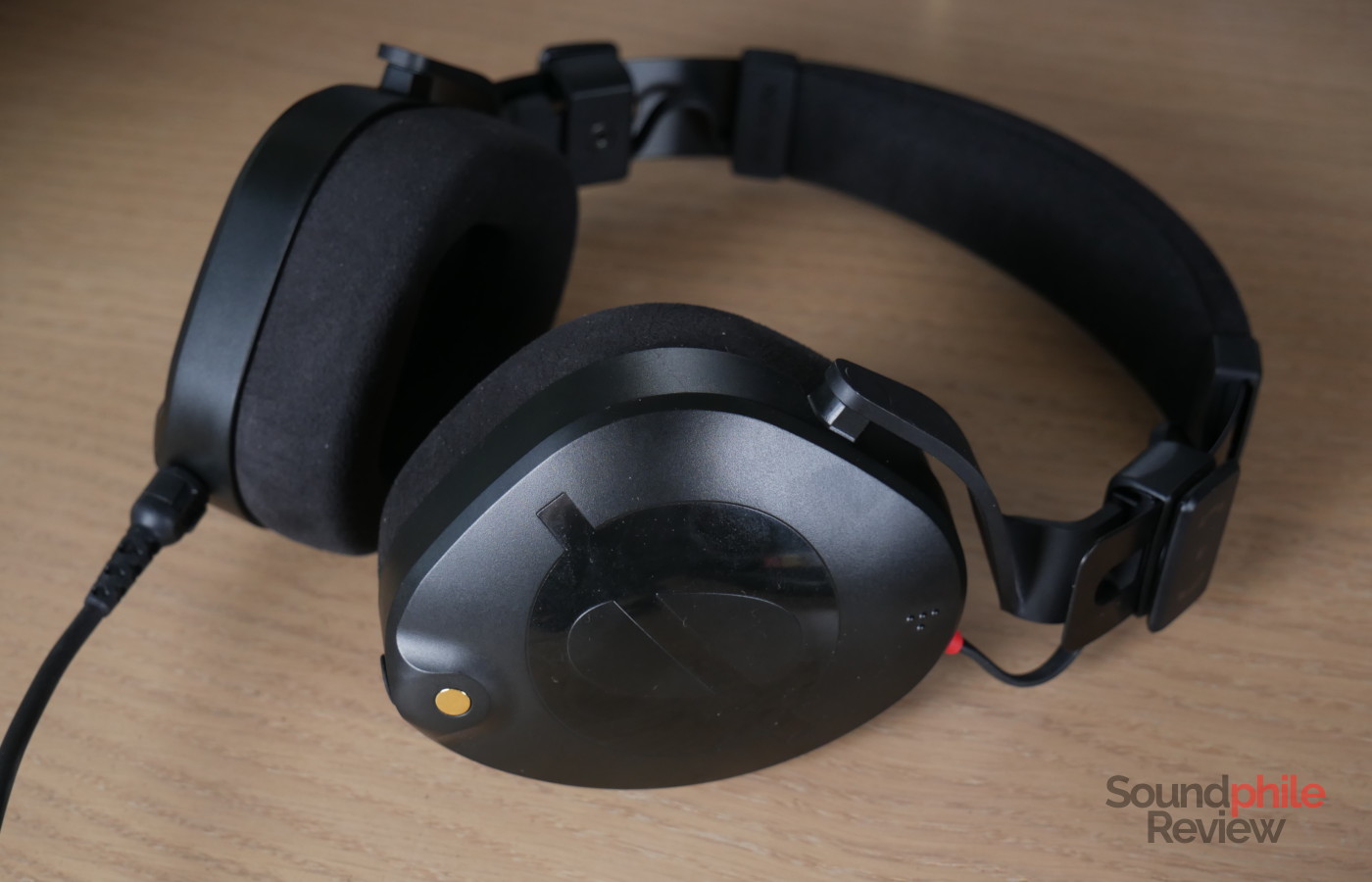
The design of the RØDE NTH-100 is quite unlike that of any other headphones I have tried, for multiple reasons. Not only is the shape different, with almost-triangular earcups, but there are also practical aspects. The cable can be inserted in either socket on the left or right hand side; each side can be adjusted in length by twisting the corresponding plate on the headband. Given how the cable can be inserted in any of the two earcups, there is a wire connecting them; it is hidden below the abundant padding on top, but it appears on the sides.
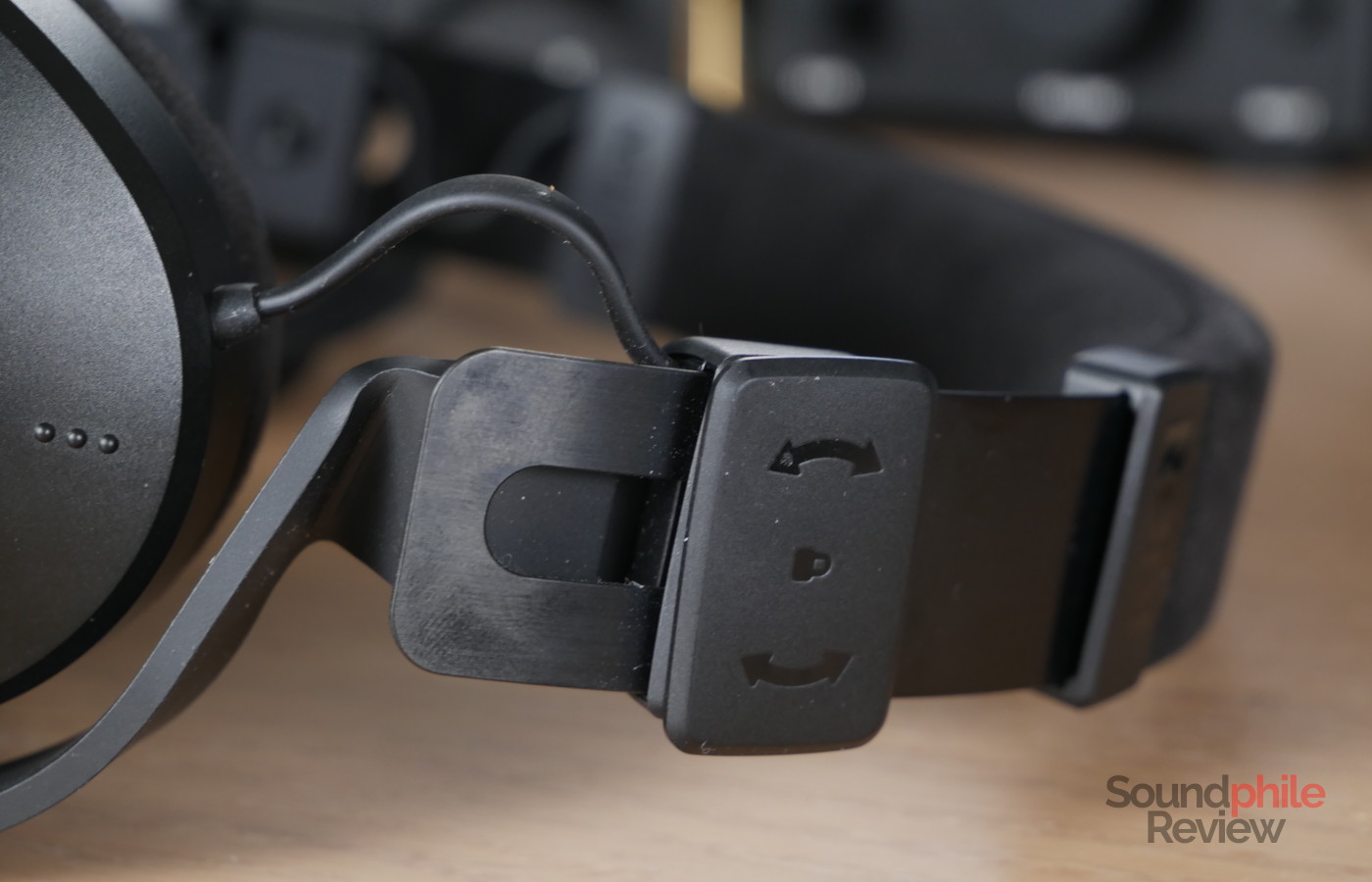
Build quality is great and the NTH-100 feel strong and durable. The wide usage of metal surely has a good part in this feeling, but the plastic feels robust as well. These headphones look like proper studio equipment, so they feel like they’re made to last.
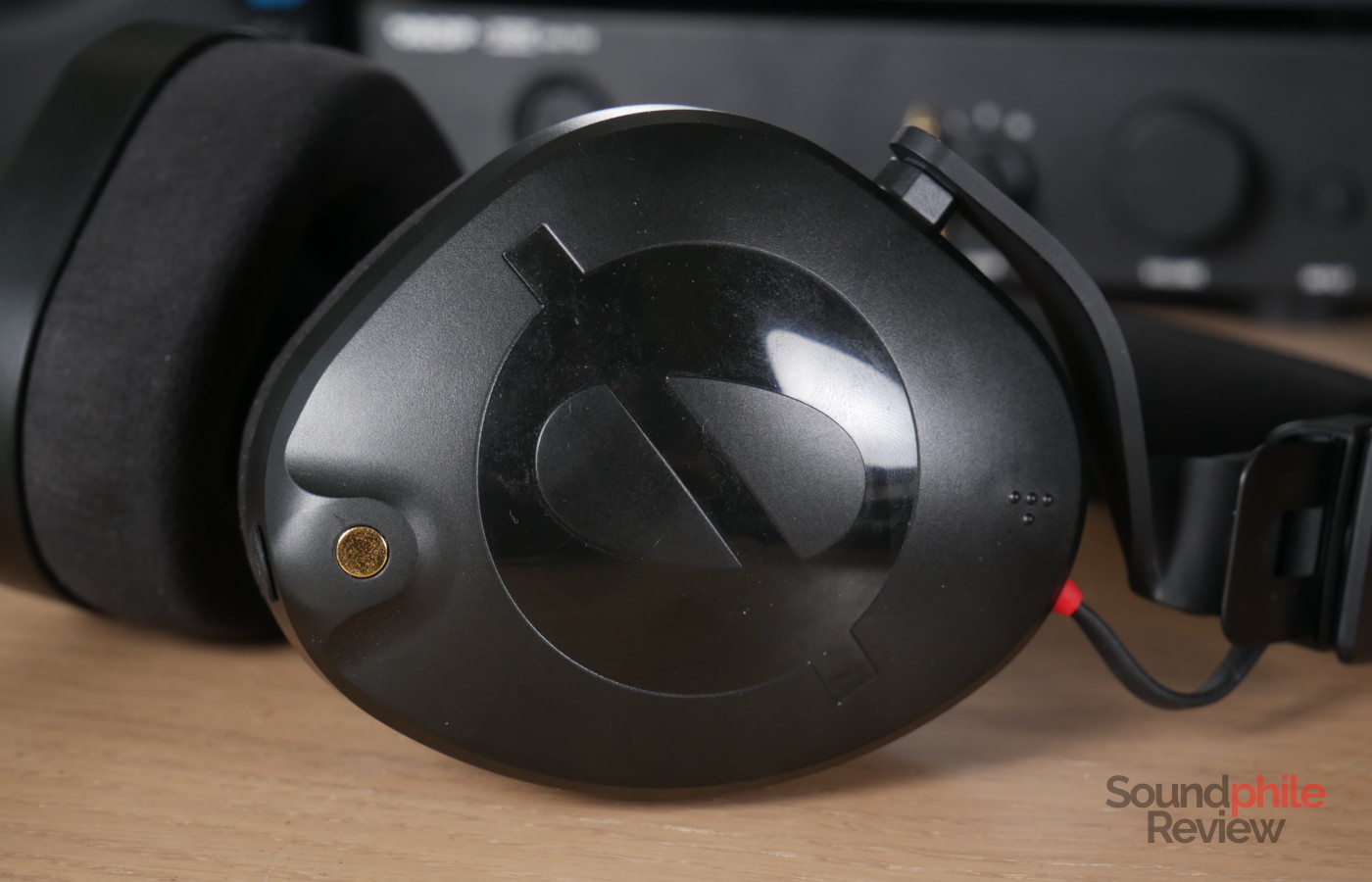
Passive isolation is decent, but it won’t shield you completely from sounds. Still, it is good enough to reduce the volume of the diesel generator currently outside of my window to a tolerable level, which is something in and of itself.
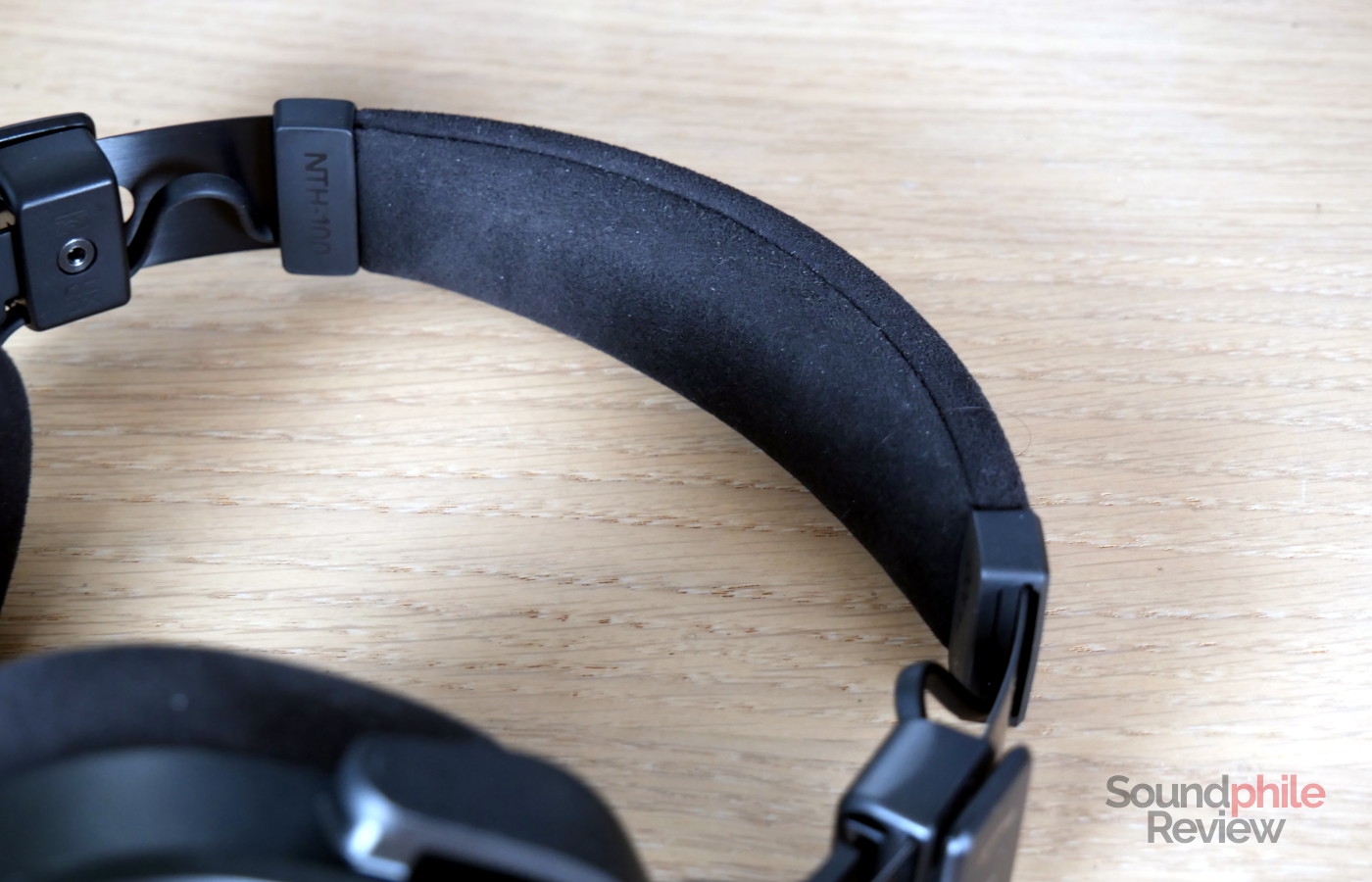
Comfort is very good, even for those with an especially sensitive scalp like me. The padding on the headband is quite effective in distributing the weight on the head so there is no single point of pressure; on the other hand, the earpads are large enough for my (relatively large) pinnae to fit comfortably, and they’re quite soft as well. The suede-like Alcantara fabric keeps the earpads soft and comfy, and the padding itself is quite soft. The headphones fit well even when you’re wearing glasses. The only negative thing I can say is that my hair, which is relatively long at around 13 cm, keeps on getting stuck in the locks and that can get quite painful quite fast when I take the headphones off!
The cable is quite soft and malleable, with a latch-on mechanism that attaches it firmly to the headphones. The other end has a screw to affix the 6.3 mm jack adapter. Unfortunately the cable exhibits quite a lot of microphonics, which is unwanted. It’s also a bit surprising, considering that wired full-size headphones usually do not have a lot of microphonics.
Sound & Specs
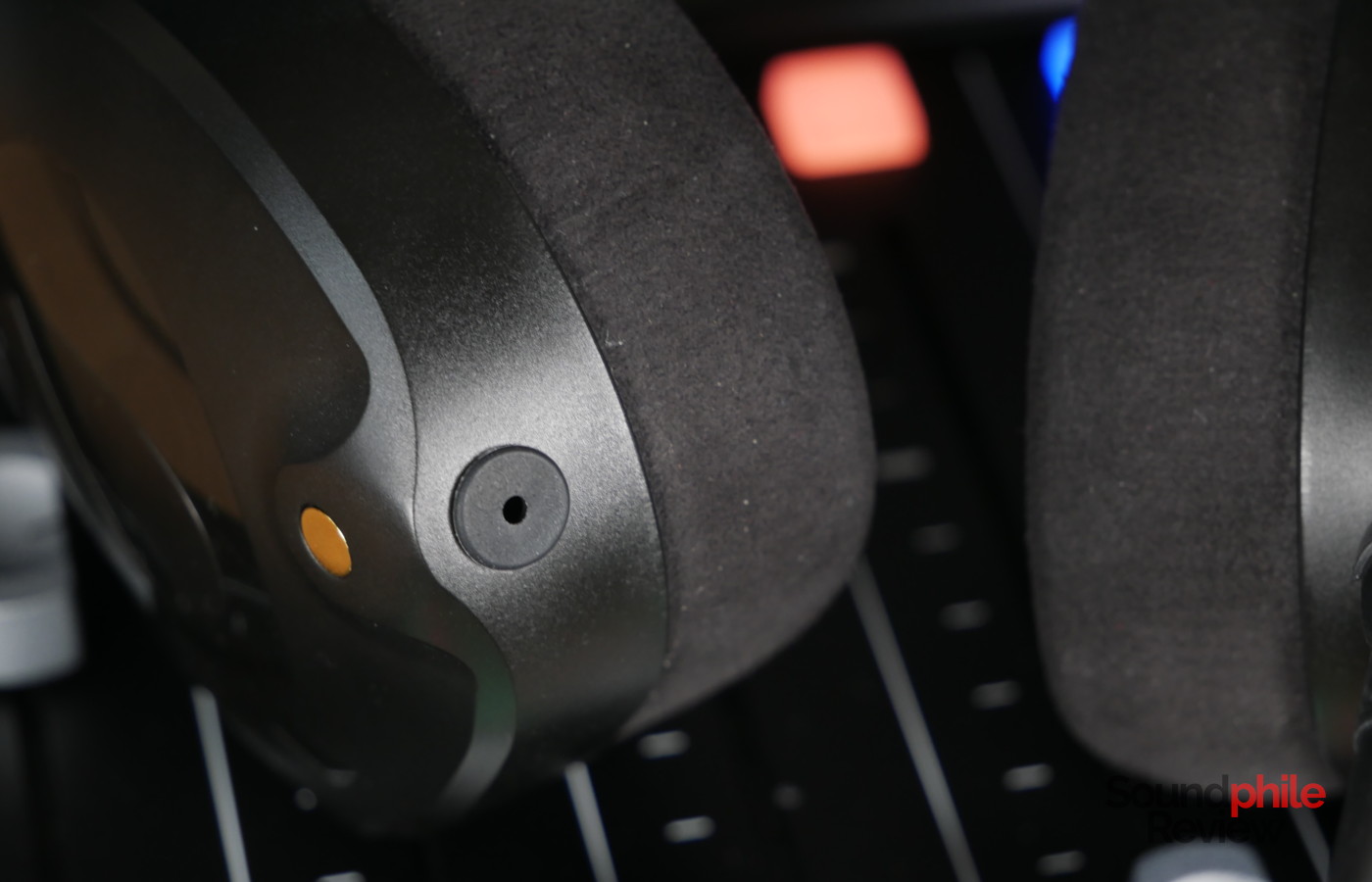
I have tested the RØDE NTH-100 using various equipment, including an SMSL DO300 driving a Drop THX AAA 789 and a Hidizs AP80 PRO-X.
RØDE NTH-100 |
| Frequency response | 5 – 35,000 Hz |
| Impedance | 32 Ω |
| Sensitivity | 110 dB |
A small note goes to the little silicone dot that is included in the box. This bit goes into the socket you are not using to connect the cable (see picture above). Not only does this prevent dust and dirt from entering the socket, but it has a measurable effect on the sound. The reason why RØDE included it is that they found out that leaving the socket open had a tangible impact on the sound, so they designed this little silicone lid to mimic the effect of the inserted jack. It has a hole and if you plug it you can hear a clear difference! I have to admit that when I found this out I was quite impressed with the approach taken by RØDE here and with their keen attention to detail, as I would never have thought something like this would have had an impact.
One thing that is really impressive about the RØDE NTH-100 is their soundstage: despite being closed-back, they offer a very wide soundstage that rivals that of open-back headphones. Imaging is also very accurate and allows you to pinpoint instruments easily. Instrument separation is quite good across the board.
Bass is mildly elevated in the mid-bass area, with sub-bass being present but slightly recessed. There is a bump around the 100 Hz mark which is clearly audible and which makes the sound as a whole slightly warm, although it isn’t large enough to completely alter the tonality nor to leak over the mids. The transition to the mids is done very well, with a somewhat clear separation which doesn’t feel abrupt. Speed is quite good, as you can hear in Snarky Puppy’s Bent Nails; the transients are fast and offer relatively fast decay (for a dynamic driver in a closed-back headphone, anyway). Detail is quite good.
Midrange has some additional emphasis in the middle area, followed by a slight bump in the upper one that gives the sound a bit of a bright kick, without altering the overall tonality and without any excesses. This means instruments such as trumpets, electric guitars and violins have more bite, but they never become aggressive. Voices are well balanced as both male and female ones are rendered cleanly, without preference for either. Again, transients are managed very well with good speed and decay. Detail is, once again, very well portrayed.
Treble is very well crafted, striking just the right balance: it is clearly audible in the mix, without ever becoming fatiguing or excessive. It sits at just the right place throughout its whole part of the spectrum. It isn’t the clearest treble presentation out there, nor the most detailed, but it doesn’t ever end up being aggressive either and is suitable for those who are more sensitive to the upper frequencies as well, which is quite rare.
Final Thoughts
Considering this is RØDE’s first headphone, I am really struck. They managed to craft something that does almost everything right on first try, which is an achievement in and of itself. The RØDE NTH-100 are incredibly comfortable headphones which you can use to listen to music for hours on end. They’re built like tanks and with a rare attention to detail.
The only doubt I have is for use in mixing and monitoring. The warmth in the sound signature is clearly audible and can affect the way your mix can turn out, making it slightly thin if you only use these to do the mixing. A more neutral sound would be needed for mixing in my opinion. They can be good for monitoring if you take this non-neutral signature into account.
That said, I think the NTH-100 are great headphones that definitely deserve being at least considered if you want an almost-neutral pair of headphones for music listening, while I would not strictly recommend them for audio production unless you specifically want warm headphones for whatever reason.

